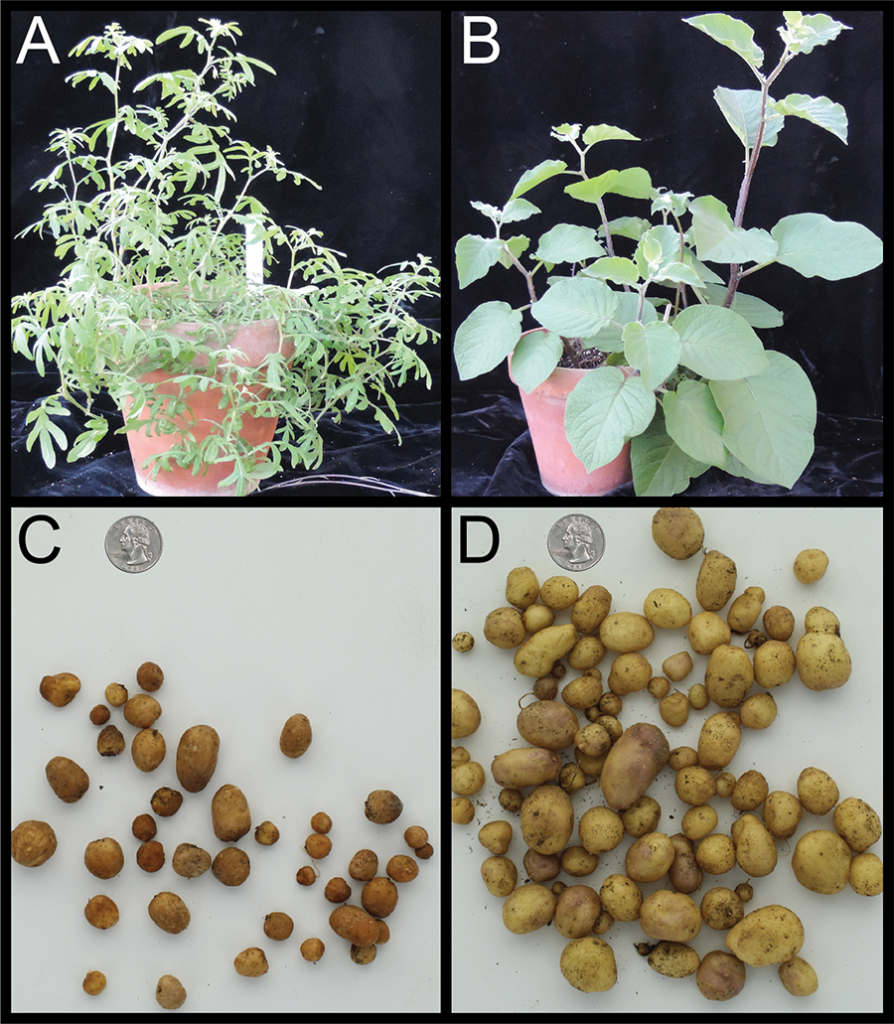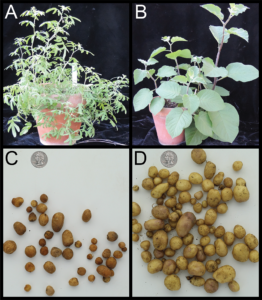
Harnessing the power of wild potatoes
The potatoes we enjoy today as a staple in our diets have come a long way from their wild, distant relatives. These wild potatoes, native to Central and South America, look vastly different from the plump and versatile spuds we know. With small, bitter and toxic tubers, they hardly resemble the cultivated potatoes we consume daily.
So, why bother studying them at all? The answer lies in their incredible adaptability to diverse climates, ranging from jungles to deserts, mountaintops to plains, and even in trees where they grow without touching the ground. These wild potatoes can thrive without the need for pesticides, irrigation or fertilizers, offering a unique resource for breeding more resilient crops.
The cultivation of potatoes as a food crop originated about 10,000 years ago in the Andes Mountains in South America. However, the edible versions have maintained a strong connection with their wild relatives. There are 107 different species of wild potatoes, which evolved separately from tomatoes around eight million years ago.
The Andes Mountains played a crucial role in the formation of these species, as plants had to adapt to various altitudes, soil types, temperatures, pests and diseases. Consequently, the highest diversity of wild potatoes can be found in the Andes, but wild species stretch from central Chile and Argentina through Central America into the southwestern United States.

Conservation efforts are in place to preserve these wild potatoes in their natural habitats and genebanks worldwide. In the U.S., the Potato Genebank in Sturgeon Bay, Wisconsin, houses thousands of wild potato varieties.
However, many populations still exist in unprotected areas, making them vulnerable to climate change, urbanization and other threats. Preserving them in genebanks and natural habitats is crucial to avoid losing this valuable genetic resource.
CREATION OF NEW VARIETIES
Wild potatoes serve a critical role in improving cultivated potato varieties. These wild relatives possess diverse traits, such as disease and pest resistance, adaptability to extreme weather, limited nutrient resources and reduced water availability. Most wild potatoes can be crossed with cultivated ones, allowing for the transfer of beneficial traits.
For example, the development of a heat-tolerant cultivar called Zahov involved wild species like Solanum chacoense, S. berthaultii, and S. microdontum. Other wild species have been utilized to introduce resistance to late blight, potato virus Y and nematodes, and to enhance processing quality traits.
Despite the potential benefits, there are challenges associated with using wild potatoes in breeding. The diversity among wild species makes finding specific desired traits akin to finding a needle in a haystack. Additionally, because wild potatoes are maintained as populations of true seed, repeating evaluations requires starting from scratch.
However, numerous evaluations have been conducted over the years. Bashir et al. (2021) highlighted three main areas where wild potatoes have been evaluated: quality traits, abiotic stress (temp., drought, salinity), and biotic stress (pests and pathogens).
INCREASING BREEDING ACCESSIBILITY
To make wild potato species more accessible for breeding, USDA scientists at the Vegetable Crops Research Unit in Madison, Wisconsin, have developed a collection of geographically and genetically diverse wild potato individuals. Unlike traditional population collections, these selected representatives are maintained as tissue culture plantlets. They have undergone testing for disease and pest resistance, including early blight, late blight, soft rot and the Colorado potato beetle.
Genetically characterized using DNA technologies like genome sequencing, this diversity panel allows scientists to identify similarities and differences between individuals and cultivated potatoes. Moreover, this panel is being crossed with cultivated breeding material to assess the inheritance of desirable traits. Most importantly, this collection will be made available to the scientific community, fostering further utilization in breeding cultivated potatoes without the need to perform extensive testing themselves.
The wild relatives of the potato crop, despite their unpalatable characteristics,
offer a wealth of genetic diversity that can enhance the resilience of cultivated varieties. Studying and conserving these wild potatoes not only ensures the preservation of a valuable genetic resource but also provides a foundation for developing more robust and adaptable potato crops to meet the challenges of a changing world.
The Potato Association of America mission statement: The PAA and its allied associations must strongly support the private sector through Extension, research and commercialization efforts aimed at enhancing the role of the potato as the premier food source for the 21st century.














